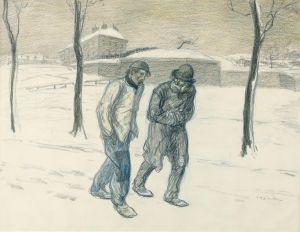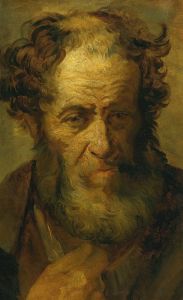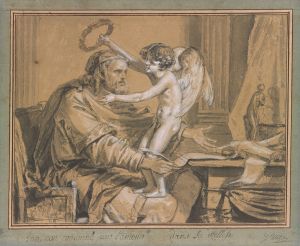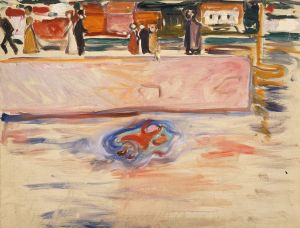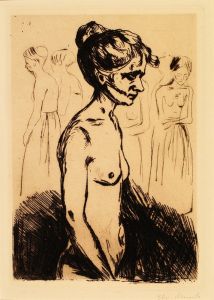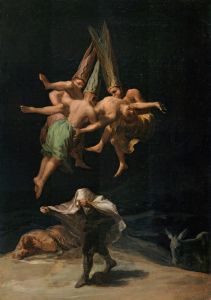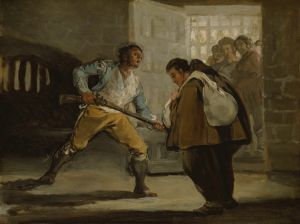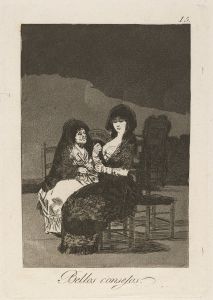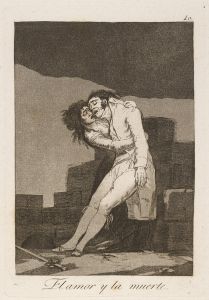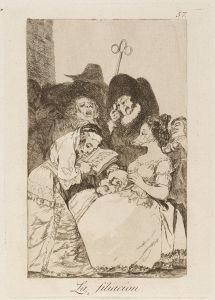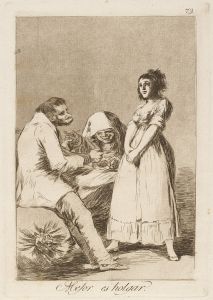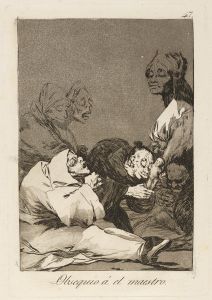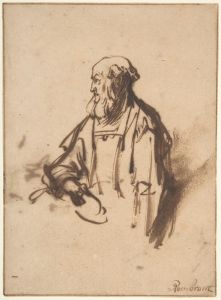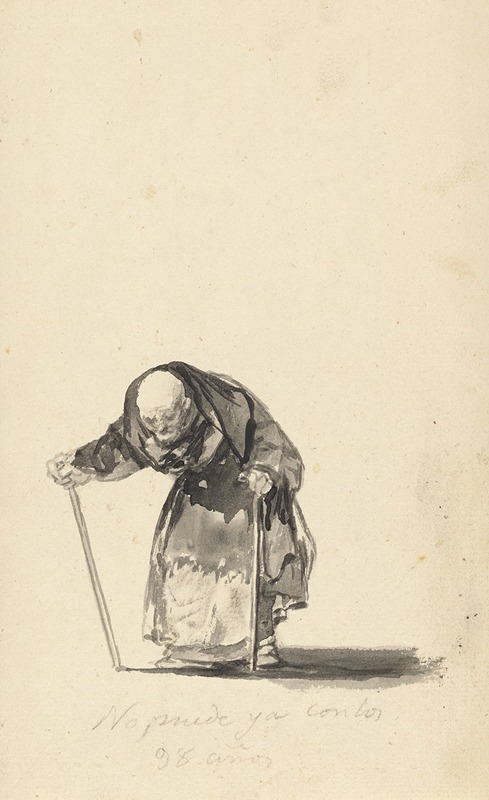
He Can No Longer at the Age of Ninety-Eight
A hand-painted replica of Francisco de Goya’s masterpiece He Can No Longer at the Age of Ninety-Eight, meticulously crafted by professional artists to capture the true essence of the original. Each piece is created with museum-quality canvas and rare mineral pigments, carefully painted by experienced artists with delicate brushstrokes and rich, layered colors to perfectly recreate the texture of the original artwork. Unlike machine-printed reproductions, this hand-painted version brings the painting to life, infused with the artist’s emotions and skill in every stroke. Whether for personal collection or home decoration, it instantly elevates the artistic atmosphere of any space.
"He Can No Longer at the Age of Ninety-Eight" is a drawing by the Spanish artist Francisco de Goya, created around 1824-1828. This work is part of Goya's "Black Drawings" series, which he produced during the later years of his life. The drawing is executed in black crayon on paper and measures approximately 14.5 x 20.5 cm.
Francisco de Goya (1746-1828) is one of Spain's most renowned artists, known for his paintings, drawings, and etchings that often reflect the social and political turmoil of his time. Goya's work evolved significantly over his career, moving from early Rococo influences to a more personal and expressive style. His later works, including the "Black Drawings," are characterized by their dark themes and somber tones, reflecting his disillusionment with society and the suffering he witnessed.
"He Can No Longer at the Age of Ninety-Eight" depicts an elderly man, hunched over and frail, struggling to walk with the aid of two canes. The figure's face is marked by deep lines and an expression of exhaustion, capturing the physical and emotional toll of old age. The drawing's title, inscribed by Goya himself, underscores the man's advanced age and his inability to continue with the vigor of his youth.
This drawing, like many of Goya's later works, is imbued with a sense of melancholy and introspection. It is believed that Goya's own experiences with illness and aging influenced these themes. By the time he created this drawing, Goya was in his late seventies and had endured several serious health issues, including a near-fatal illness in 1793 that left him deaf.
The "Black Drawings" series, to which this work belongs, was created during Goya's self-imposed exile in Bordeaux, France. After the restoration of the Bourbon monarchy in Spain, Goya, who had been a court painter, found himself increasingly at odds with the political climate. In 1824, he left Spain for Bordeaux, where he continued to work until his death in 1828.
"He Can No Longer at the Age of Ninety-Eight" is a poignant reflection on the inevitability of aging and the decline of physical abilities. It is a testament to Goya's skill in capturing the human condition with empathy and realism. The drawing is part of the collection at the Prado Museum in Madrid, which houses many of Goya's works and serves as a significant repository of Spanish art.
Goya's "Black Drawings" series, including this piece, remains influential in the art world for its raw and unflinching portrayal of human suffering and existential despair. These works continue to be studied and admired for their emotional depth and technical mastery, offering insight into the mind of one of history's greatest artists during the final years of his life.





